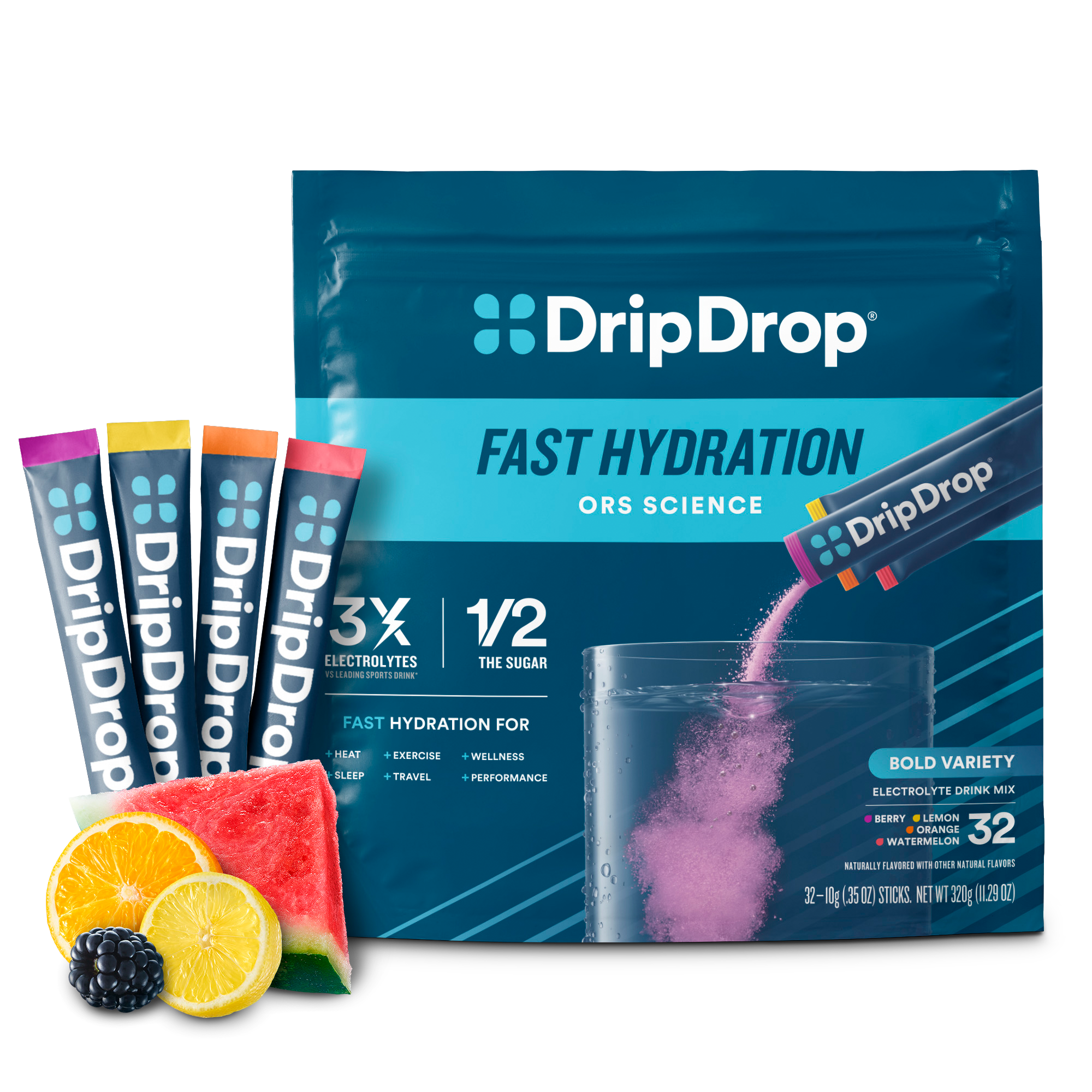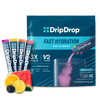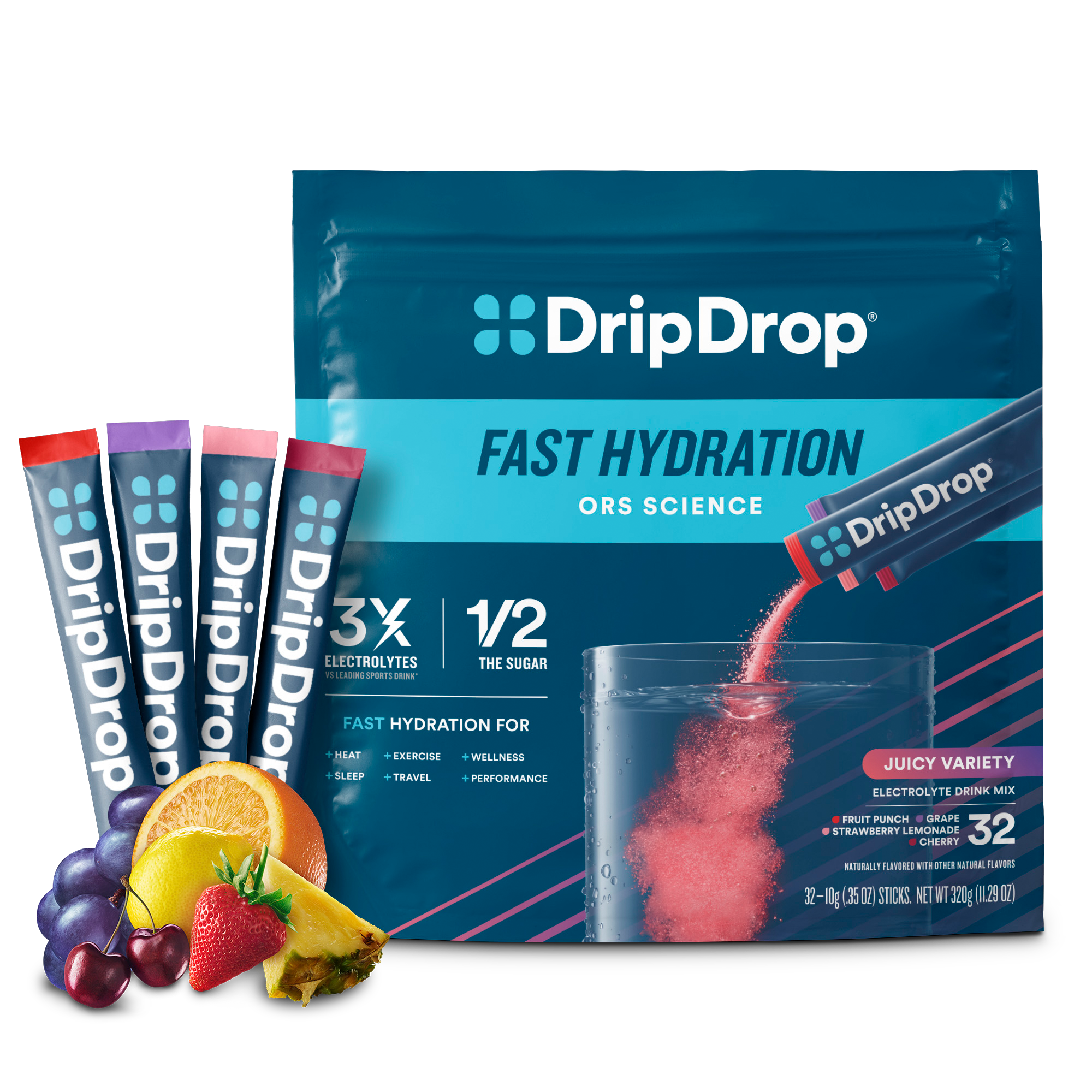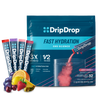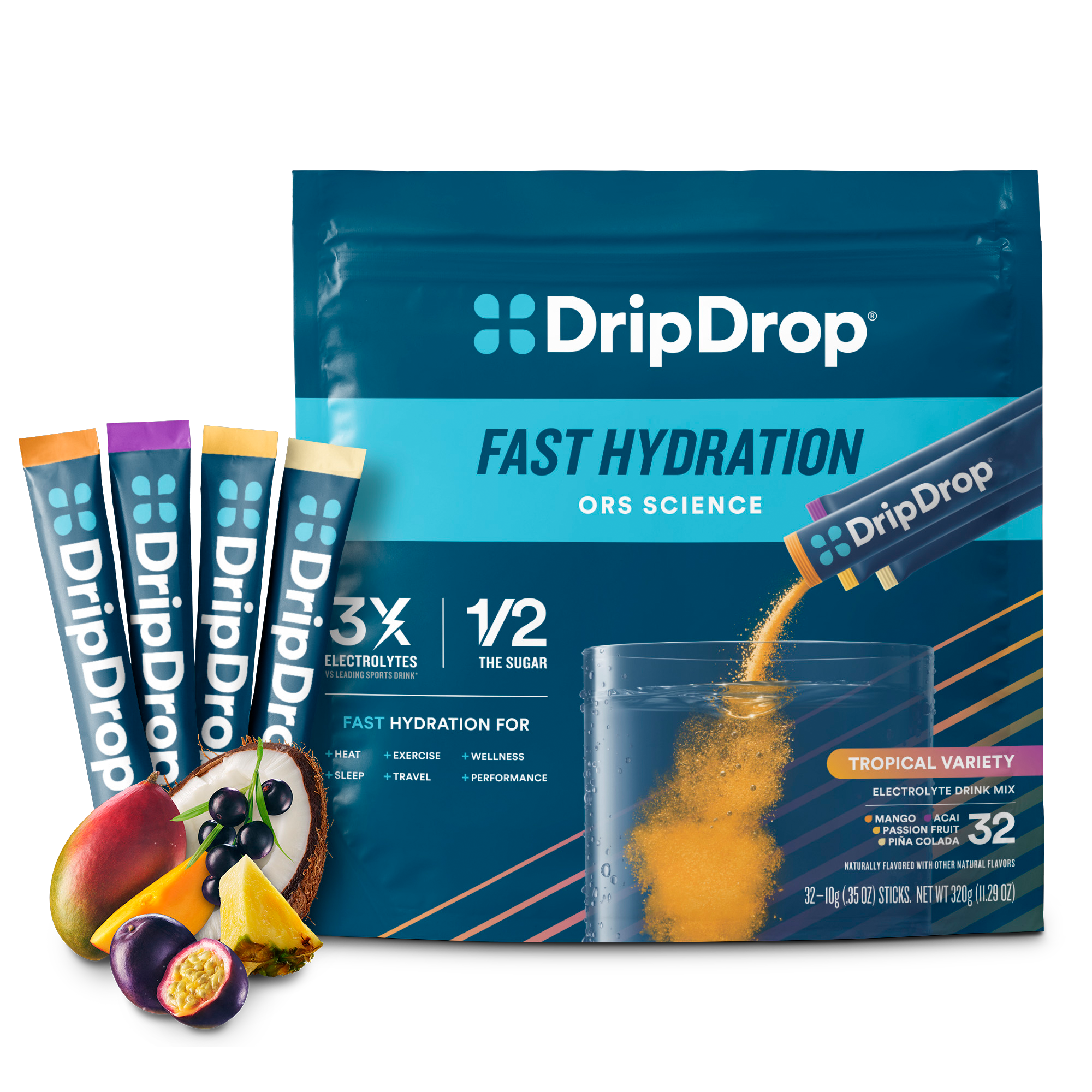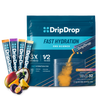GLP-1 medications like Ozempic, Mounjaro, and Wegovy are transforming how people manage type 2 diabetes and achieve weight loss goals. But staying hydrated on a GLP-1 is an often-overlooked part of the equation.
Many people don’t realize that these medications can alter how your body manages fluids. They slow digestion, suppress appetite, and can bring on side effects like nausea or diarrhea—all of which increase the risk of dehydration. So if you're on a GLP-1 and feeling extra tired, dizzy, or just off, it could be your body signaling that it needs more than just water.
Understanding the connection between hydration and weight loss medication can help you feel better, stay on track with your treatment, and avoid common side effects.
How GLP-1s Affect Hydration in the Body
One of the key ways GLP-1s work is by slowing down gastric emptying, which helps with blood sugar control and appetite regulation. But that slower digestion also changes how fluids move through your system, and appetite suppression can lead you to drink less water throughout the day.
Side effects can compound the problem. Nausea, vomiting, and diarrhea aren’t just uncomfortable—they also lead to fluid and electrolyte loss. And when your electrolyte levels drop, your body can struggle to absorb the water you drink, making plain water less effective at rehydrating you.
That’s where an oral rehydration solution, like DripDrop, can make a real difference for GLP-1 users. Developed by a doctor using proven medical science, DripDrop helps you absorb fluids faster and more effectively with a precise mix of electrolytes and key minerals. It's hydration that works smarter, not harder.
What Dehydration Can Look Like on GLP-1s
Mild dehydration might not be obvious at first. You may just feel low energy, a little foggy, or have a dry mouth. But left unchecked, it can get more uncomfortable. Constipation, dizziness, and dark-colored urine are all signs your body’s trying to tell you it needs more fluids—and more support absorbing them.
GLP-1s change how your body processes both food and fluids, so you might not realize how much your needs have shifted. Because your appetite and thirst response is diminished, staying hydrated on GLP-1 isn't just a recommendation—it’s a key part of supporting your body’s adjustment to these medications.
Why Hydration Matters on a GLP-1
Hydration is essential for everyone—but especially for people using GLP-1s. Getting enough fluids helps keep digestion moving, which can ease issues like constipation. It also helps minimize headaches, stabilize energy levels, and support clearer thinking—things that are often impacted during the early phases of GLP-1 treatment.
Proper hydration also helps your body stay the course with your medication. If you're feeling better overall, you're more likely to stick with your treatment plan and see results. Using something like DripDrop for dehydration can provide faster relief during tougher moments, especially when nausea or vomiting makes plain water hard to tolerate.
Optimal Daily Water Intake on a GLP-1
Most people are familiar with the “8-glasses-a-day” rule, but when it comes to water intake for GLP-1 users, the ideal amount might be more than that. Activity level, climate, and how your body responds to medication all affect how much fluid you need. And if you’re losing fluids from GI side effects, replenishing them quickly is key.
That’s where DripDrop stands out. With 3x the electrolytes of leading sports drinks, plus key vitamins and minerals, it helps your body rehydrate fast—and hold onto the fluids and electrolytes you need to function at your best. Whether you use it daily or just when you need a boost, it can be a helpful tool for managing your hydration more intentionally.
Building Better Habits Around Hydration
Being on a GLP-1 doesn’t mean you have to overhaul your life—but if you’re looking for Ozempic hydration tips, a few simple changes can help. Keep a water bottle nearby and sip throughout the day, even if you don’t feel thirsty. Try adding fruit or a flavored electrolyte mix to your water to make it more appealing. Foods like cucumbers, melons, and soups can also introduce more hydration into your meals.
And on the days when GLP-1 side effects hit harder, you don’t need to tough it out. Mixing DripDrop into your water can help you bounce back faster and feel more like yourself.
A Smarter Way to Stay Hydrated
When you’re taking a GLP-1 medication, hydration isn’t just helpful—it’s essential. It supports your digestion, your energy, your focus, and your ability to stick with the plan. And if plain water isn’t getting the job done, it’s okay to reach for something more effective.
DripDrop was developed by a doctor using proven science to deliver fast, great-tasting hydration when you need it most. It’s trusted by medical professionals, athletes, and people on the go. It works faster than water alone and comes in a variety of flavors, so staying hydrated feels less like a chore—and more like a smart part of your daily routine.



